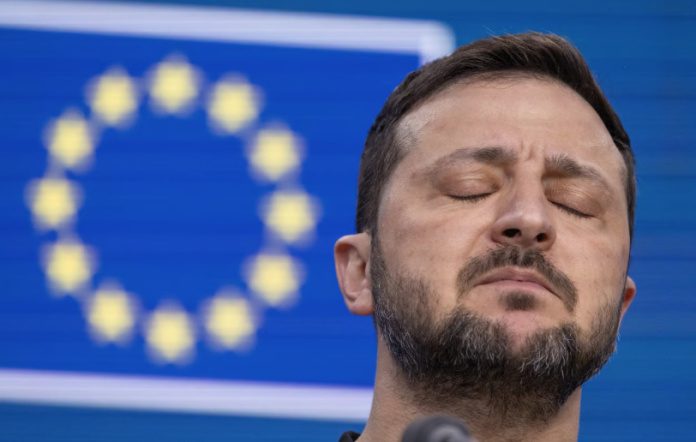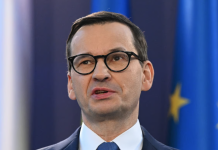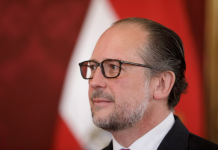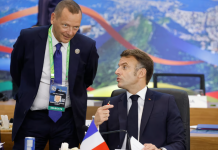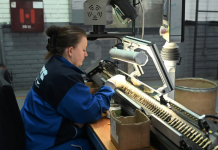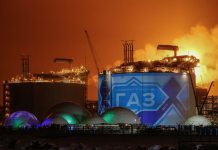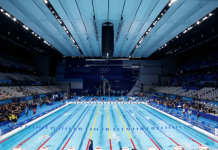A coalition of willing NATO allies could physically step in to help secure a future demarcation zone between an independent Ukraine and a Russian-occupied one.
Krišjānis Kariņš is the former prime minister of Latvia (2019–2023).
Europe’s future security is hanging by a thread. Yet, for many on the continent, the war in Ukraine seems remote. Indeed, walking through the streets of Brussels, one can’t even sense there’s a war going on.
But there is. Russia’s aggression has already lasted more than 1,000 days, and despite heavy losses in manpower and equipment, Moscow isn’t relenting.
Indeed, even as the United States rushes in military supplies ahead of President-elect Donald Trump’s inauguration, there’s no denying that, at this stage, Ukraine is on the back foot. And though the assistance from President Joe Biden’s administration has been marked by constant caution and delay, often resulting in “too little, too late,” the new administration could be even worse.
Hence, this needs to be a wake-up call for the European Union, a warning that it must step up to protect its own interests — no matter what the U.S. decides to do.
For many, after almost three years of war, it’s now finally sinking in that it’s hard to see how exactly Kyiv can liberate all the occupied territories in the short term. Russia’s ability to generate forces with the aid of Iran, North Korea and China is outpacing what Ukraine and its partners can — or are willing to — match, and brutal aggression is winning the day.
Furthermore, from the West’s perspective, the conflict’s end goal has changed from Ukraine winning the war to preserving an independent Ukraine.
However, recent experience clearly shows that simply coming to a cease-fire agreement with Russian President Vladimir Putin won’t bring peace. After all, a cease-fire had been obtained following 2014’s illegal occupation and annexation of Crimea and the ensuing war in Donbas, but Russia simply used it to ramp up its forces and stage a full-force invasion in 2022.
A cease-fire in the near term would be difficult to attain in any case, as there’s no indication that Russia is interested in negotiations.
Nevertheless, we must expect the new Trump administration will attempt to force an end to hostilities one way or another — even at the expense of Ukraine’s ability to defend itself. And when it does, both Ukraine and Europe must have a seat at the negotiating table.
Additionally, assuming a cease-fire can be achieved at the end of any negotiations, it is unclear how long such a peace would last. Thus, wherever the possible line of demarcation between an independent and an occupied Ukraine may end up falling, it must be unambiguously defended by more than just Ukrainian military forces. Anything short of that would mean Russia will resume its attack with the same goal in mind — sooner or later.
That is why Ukraine’s new Minister of Foreign Affairs Andrii Sybiha recently requested full NATO membership as the only serious security guarantee for his country. With this request, he’s essentially stating the obvious: Without the West’s presence in Ukraine after hostilities end, there will be no peace.
With Trump entering the White House, however, the possibility that Ukraine will be invited to join seems remote. The same argument France and Germany used to deny Ukraine NATO membership back in 2008 is being repeated today: The belief that Putin would start a nuclear war in order to fulfill his dream of creating a new Russian empire, and that peace can be maintained through appeasement. But the past 1,000 days are proof this isn’t true.
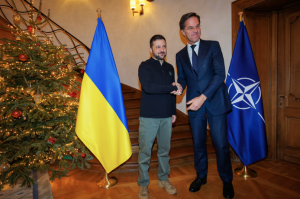
Appeasement doesn’t lead to peace, and Putin will continue with his aggression until stopped. I stated this more than two years ago when I was prime minister — and it’s still true today.
But if the U.S. and other NATO allies aren’t ready to support Ukraine’s membership bid, is there any other plausible alternative to try and end hostilities, secure peace, avert the country’s full destruction and prevent the war from possibly spreading?
Yes, a coalition of willing NATO allies could physically step in and help secure a future demarcation zone between an independent Ukraine and a Russian-occupied one. And if Europe were to take the lead on this, it’s likely the U.S. would be willing to support the effort, even if it didn’t necessarily involve U.S. “boots on the ground.”
The issue here is one of leadership. The incoming Trump administration will likely be unwilling to take the lead, and the United Nations Security Council is effectively paralyzed by China’s and Russia’s vetoes, which leaves Europe to take charge of securing peace in Europe.
Along these lines, the newly confirmed European Commission now has a commissioner for defense and space for the first time in the bloc’s history. And given how the institution usually works, we expect to see valiant attempts at increasing military interoperability, as well as a push to consolidate and increase the capacity of Europe’s defense industry — all of which is needed.
However, with war on its doorstep, the EU needs more than just a defense industry that’s fit for purpose. It needs hard military power to ensure Ukraine will continue as an independent country if a cease-fire can be attained.
So, it is now up to NATO’s European leaders to engage with the Trump administration in all negotiations about any kind of a cease-fire deal in Ukraine, and to make sure Kyiv has a say. And if European NATO allies are also prepared to physically help guarantee any peace deal, then there’s hope for an independent Ukraine, as well as continued peace for the rest of the continent.
It is Europe’s moment to come into its own.

